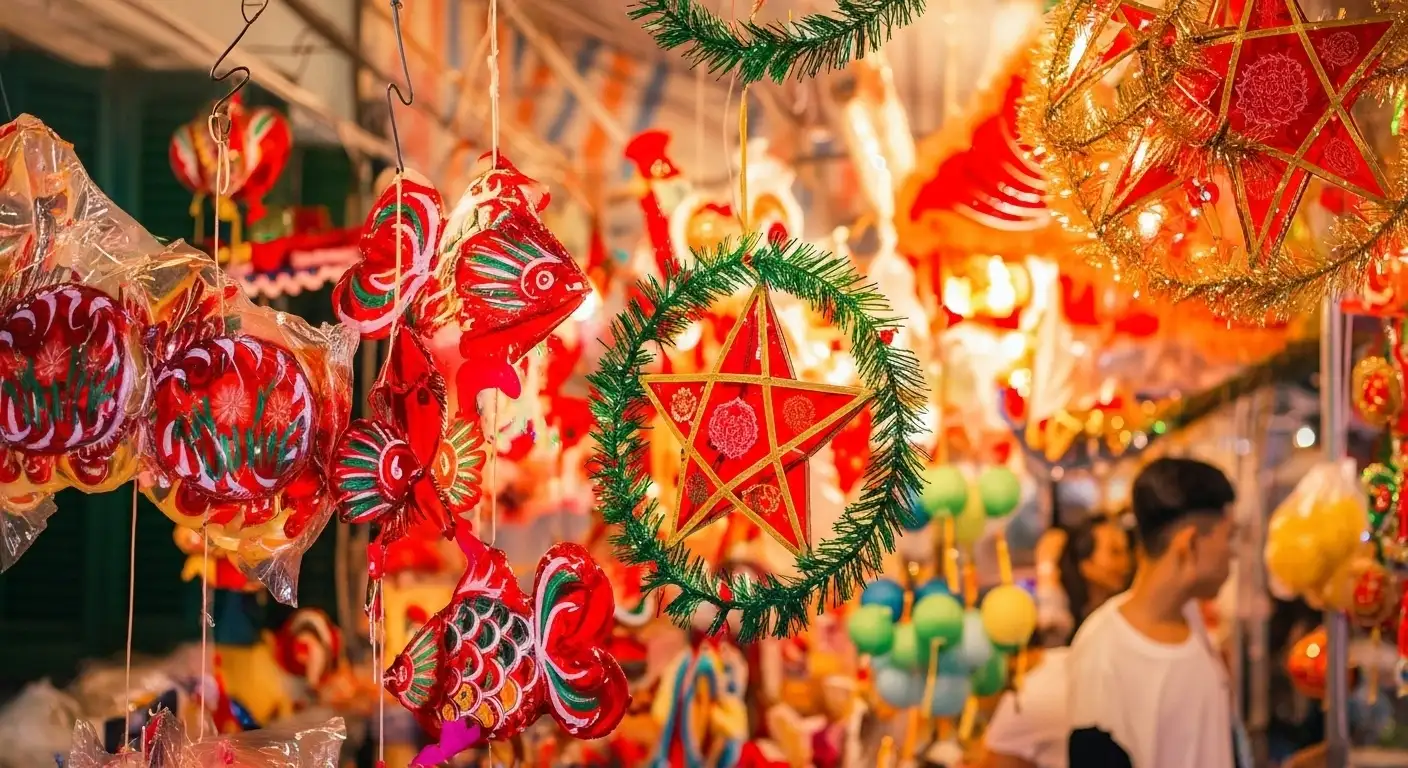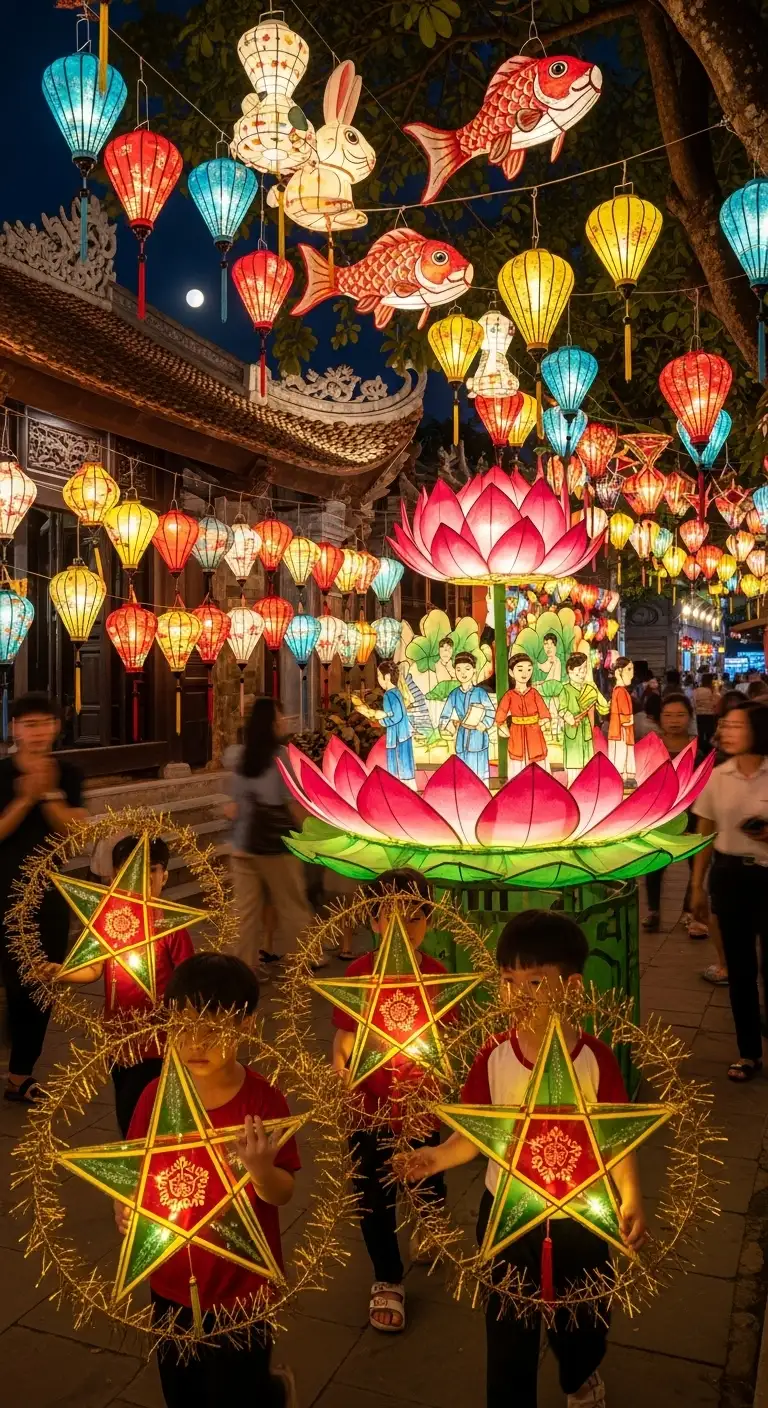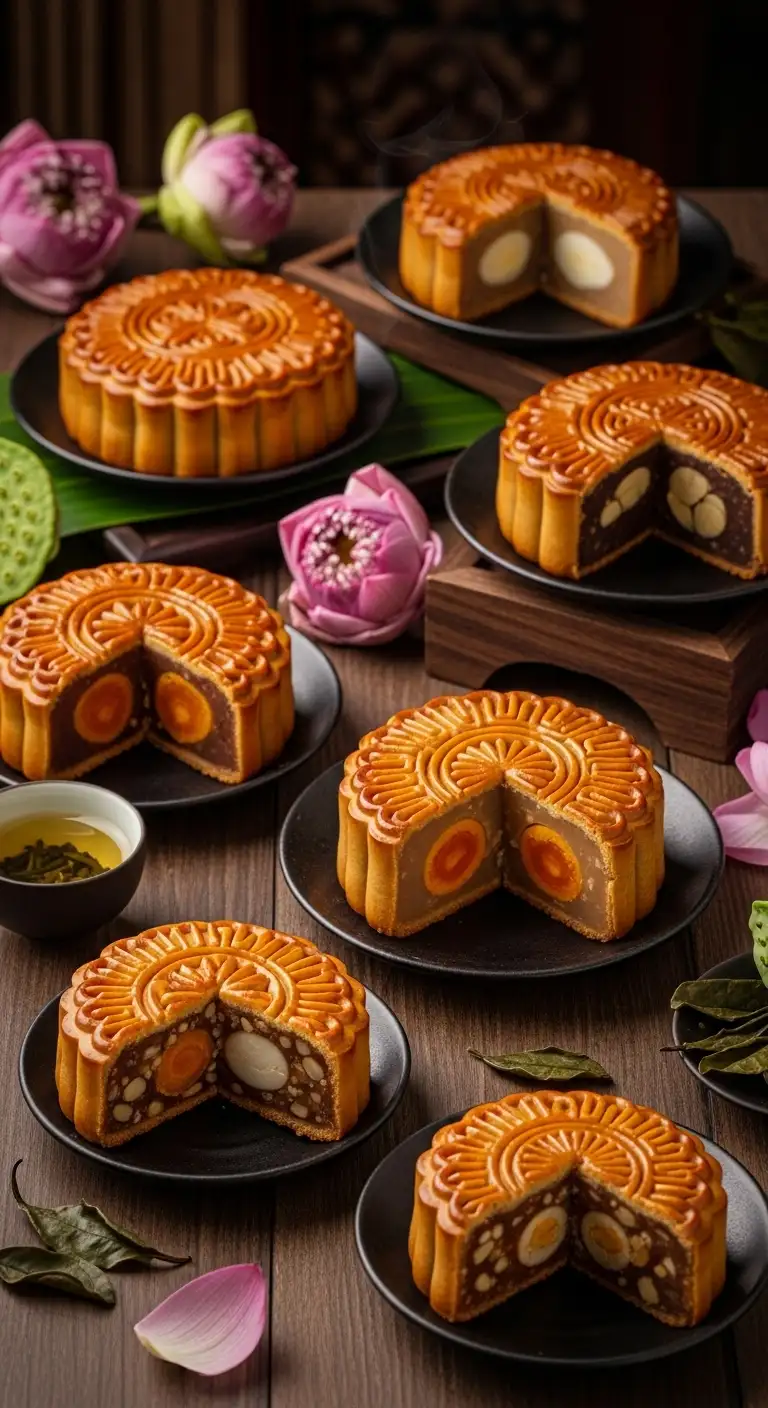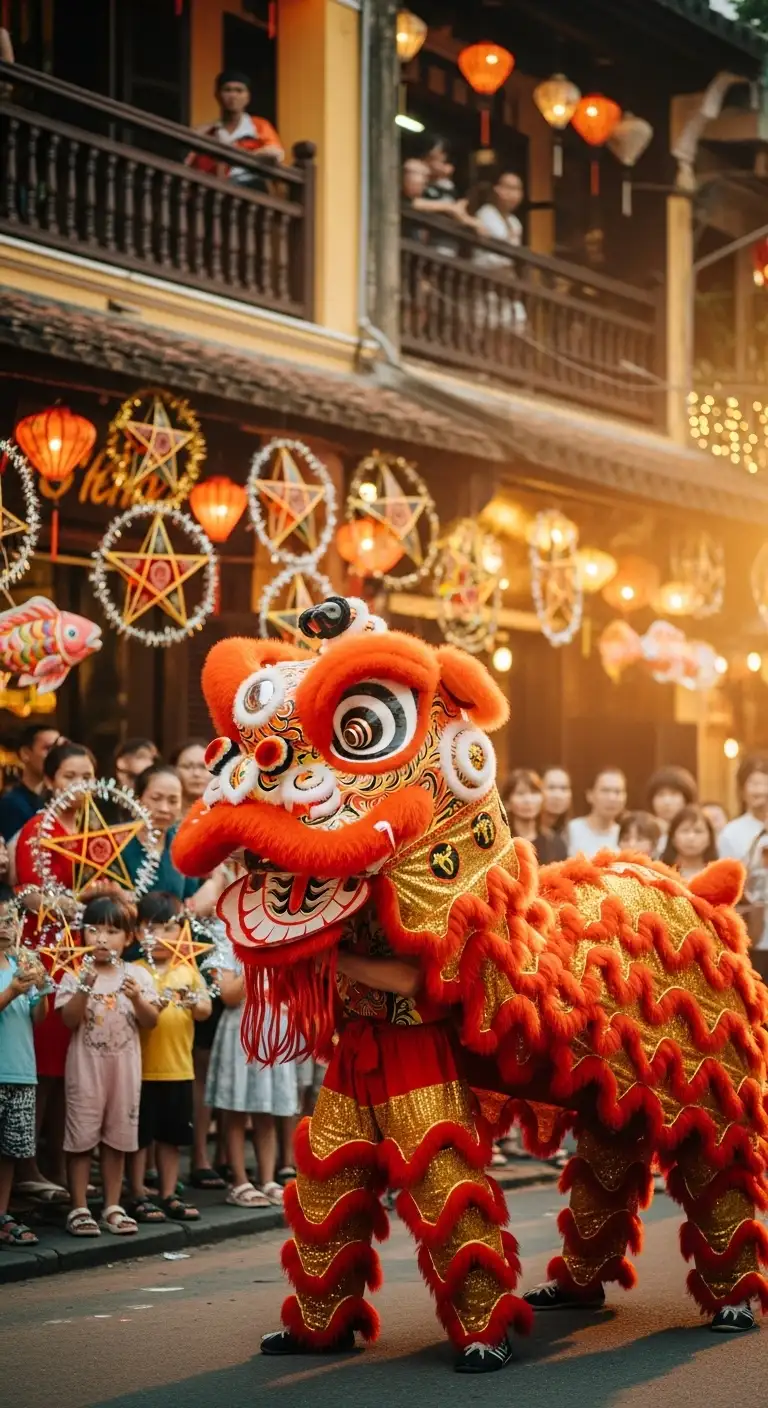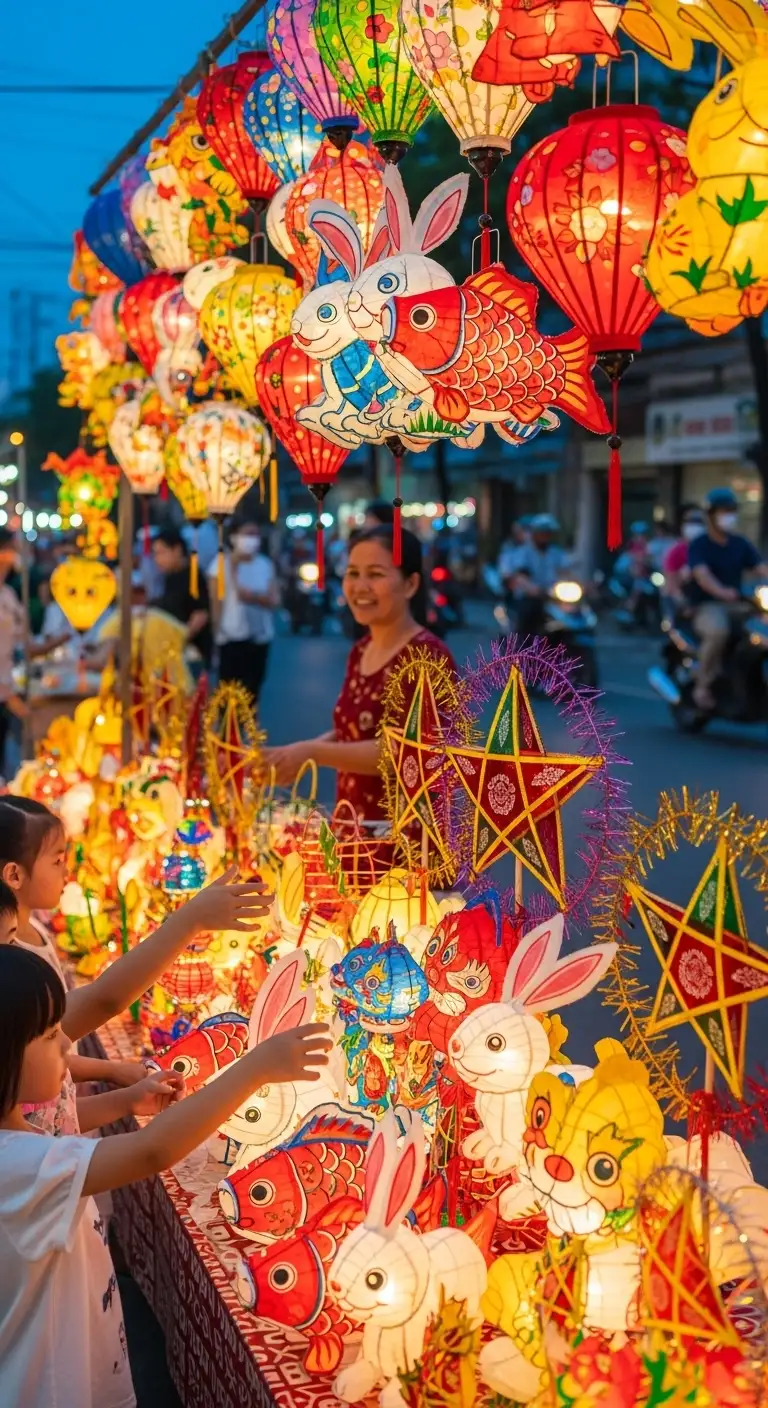Essential Information
| Data Field (Title) | Content | Icon/Note |
|---|---|---|
| Official Vietnamese Name | Tết Trung Thu | Literally "Mid-Autumn Festival" |
| Common English Name | Mid-Autumn Festival or Children's Festival (Lễ hội Trẻ em) | Not an official public holiday, but widely celebrated. |
| Festival Date | 15th day of the 8th Lunar Month (Varies in the Gregorian Calendar) | Typically falls in September or early October. |
| Major Locations | Hanoi's Old Quarter (especially Hang Ma Street), Hoi An, and Ho Chi Minh City (Cho Lon - Chinatown). | Celebrations are focused on street parades and community events. |
| Festival Category | Cultural Festival, Harvest Celebration, Children's Holiday, Family Reunion | Traditionally a harvest festival that evolved to focus on children. |
| Highlights | Mooncakes (Bánh Trung Thu), Lantern Parades (Rước Đèn), Lion and Unicorn Dances (Múa Lân), Moon Gazing. | Known for its vibrant colors and focus on young people. |
I. Overview & Significance
The Festival of Children and Reunion
Tết Trung Thu, or the Mid-Autumn Festival, is one of Vietnam’s most beloved annual celebrations. Unlike in many other Asian countries where the focus is strictly on family and thanksgiving, the Vietnamese tradition has strongly evolved into the “Children’s Festival”. It falls on the 15th day of the 8th lunar month, marking the full moon when the moon is believed to be at its brightest and fullest.
Historically, this was a celebration of the harvest. Today, it is a day for parents to make up for time lost working during the busy harvest season, rewarding their children with gifts, treats, and spectacular fun.
Folklore and Legends
The festival is tied to the legend of Chú Cuội, a man who clung to a magical banyan tree and was whisked away to the moon, where he sits lonely under the tree’s shadow. Children carry bright lanterns during the night to help light the way for Chú Cuội to see earth and not feel alone.
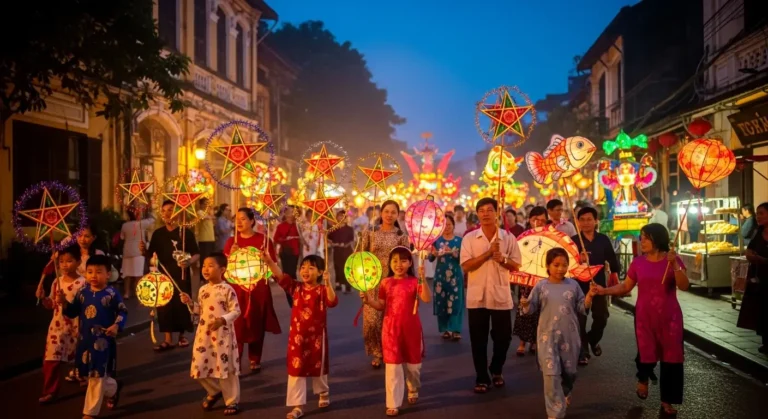
II. Key Activities and Traditions
1. Lantern Parades (Rước Đèn)
This is the most visually iconic and important activity for children.
Illuminated Streets: As night falls, streets and communities come alive with parades of children carrying lanterns of all shapes—traditional star-shaped lanterns, carp-shaped lanterns (symbolizing success), and modern cartoon characters.
The Light: The lanterns symbolize guidance, hope, and the wish for a bright future. The children sing and cheer as they follow the rhythmic beat of drums through the neighborhoods.
2. Lion and Unicorn Dances (Múa Lân)
Weeks before the festival, the sound of drums for lion dance practice echoes across the cities.
Ward Off Evil Spirits: The energetic and acrobatic Lion (and often Unicorn) dances are performed by groups of children and young adults on the streets, often accompanied by loud percussion. The dancing lion is believed to bring good luck, prosperity, and ward off evil spirits from homes and businesses.
Rewarding the Lion: The host of a house will often reward the dancing lion with “lucky money” (lì xì) in a red envelope, thrown from an upper window or placed in the lion’s mouth.
3. Mooncakes (Bánh Trung Thu)
The sharing and consumption of mooncakes are central to the festival.
Symbol of Reunion: The cakes are dense, round or square pastries that symbolize the full moon and family completeness. They are typically cut and shared equally among family members.
Variety of Flavors: Vietnamese mooncakes come in two main types:
Bánh Nướng (Baked): Features a golden-brown crust and rich, savory-sweet fillings (often lotus seed, mung bean, egg yolk, and sometimes mixed meat).
Bánh Dẻo (Sticky): Features a soft, glutinous white crust made of sticky rice flour, often filled with sweet mung bean or coconut.
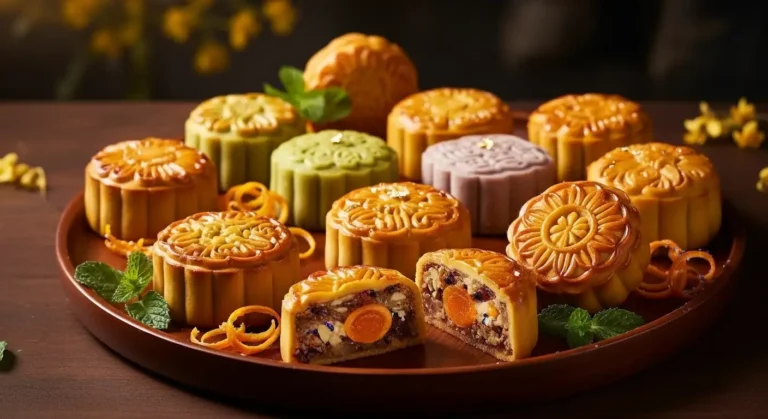
4. Festive Feast and Moon Gazing (Phá Cỗ)
Families gather for a reunion dinner and place an altar of offerings (Mâm Ngũ Quả – Five-Fruit Tray), mooncakes, and tea outside. They sit together, admire the bright full moon, share stories, and ultimately break the feast (phá cỗ) together.
III. Traveler's Practical Guide
| Guide Field | Details |
|---|---|
| Best Place to Go | Hanoi: Visit Hang Ma Street in the Old Quarter for weeks leading up to the event—it becomes a spectacular street market for toys, masks, and lanterns. |
| Best Place to Go | Hoi An: The Ancient Town is especially beautiful for Tết Trung Thu, with thousands of traditional silk lanterns lighting the streets and floating lanterns released on the Thu Bồn River. |
| Travel Impact | Minimal Disruption: As it is not a public holiday, most businesses, banks, and major services operate normally. The main impact is heavy foot traffic and street closures in central areas on the night of the festival due to parades. |
| Experience Tip | Try the Mooncakes: Sample both Bánh Nướng (baked) and Bánh Dẻo (sticky) from local vendors or bakeries. They are only widely available during this season. |
| Respectful Conduct | Join the crowds and enjoy the fun, but be mindful when photographing lion dance groups, especially if they are collecting money. It is polite to offer a small donation if you are actively taking photos of their performance. |
